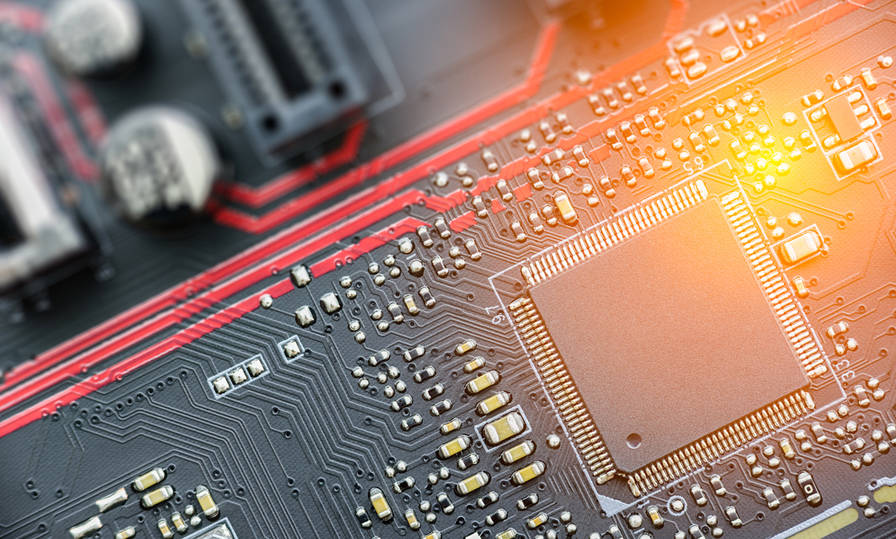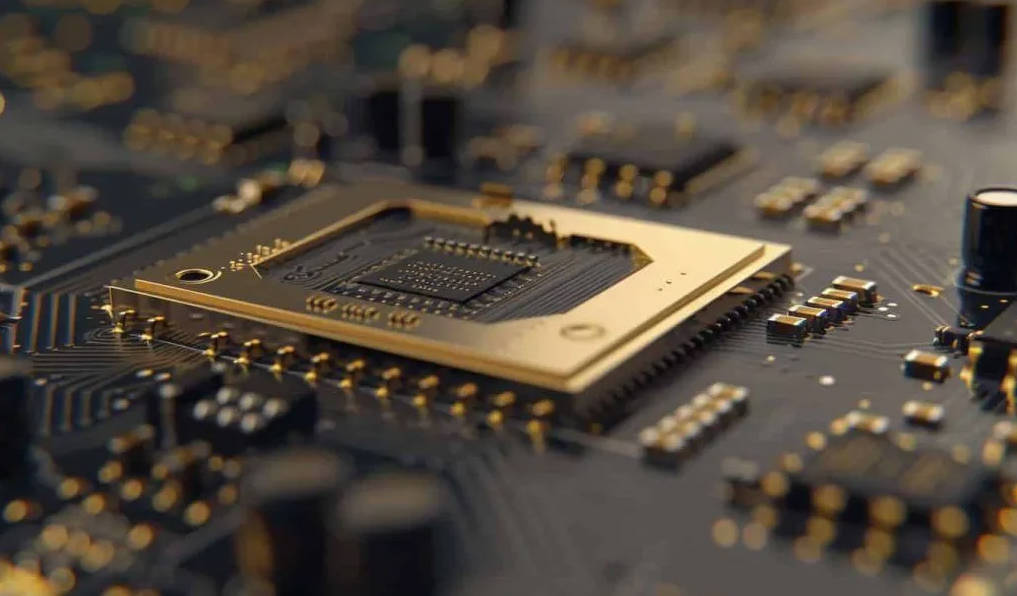1. Introduction: Why Material Matters for High-Speed Design
The rapid evolution of electronics, from 5G to AI and high-performance computing, has pushed signal frequencies into the multi-gigahertz range. At these speeds, a Printed Circuit Board (PCB) is no longer a passive carrier for components; it is an active and critical part of the circuit. The success of any high speed pcb design hinges on a multitude of factors, but one of the most critical and often overlooked is the choice of the PCB substrate material.
A suboptimal material choice can introduce significant signal integrity issues, leading to data loss, increased jitter, and timing errors. These problems manifest as intermittent system failures, reduced product reliability, and a significant challenge in the debugging process. This guide is designed to empower you with the knowledge needed to make informed decisions, ensuring your high speed pcb performs as intended from the very first prototype. We will explore the key material properties and practical considerations that define a successful high speed pcb design service and manufacturing process.

2. Key Material Properties for High-Speed Performance
When selecting a material, designers must look beyond the standard FR-4 specifications and delve into properties that directly govern signal propagation and loss. These are the cornerstones of successful high speed pcb manufacturing.
Dielectric Constant (Dk) / Relative Permittivity (ϵr)
The dielectric constant of a material determines how quickly an electrical signal can travel through it. A lower Dk value means a faster signal propagation speed, as the signal travels at a speed inversely proportional to the square root of the dielectric constant.
The primary role of the dielectric constant (Dk) in high-speed design is to control characteristic impedance. The impedance of a trace is a function of its geometry and the Dk of the surrounding material. To maintain signal integrity, designers must tightly control impedance, typically to 50 ohms. A material with a consistent and low Dk allows for wider traces, which are easier and less expensive for a high speed pcb manufacturer to fabricate. Furthermore, a stable Dk across a wide range of frequencies and temperatures is essential to prevent impedance shifts that can cause signal reflections.
Dissipation Factor (Df) / Loss Tangent (tanδ)
This is perhaps the most critical parameter for high-frequency signal loss. The dissipation factor quantifies the amount of energy absorbed by the material as the signal passes through it, converting electrical energy into heat.
A low dissipation factor (Df) is the most critical material property for minimizing signal attenuation and ensuring signal integrity in multi-gigabit designs. As frequencies increase, so does the signal loss, and this loss is directly proportional to the Df. For this reason, a standard FR-4 material with a Df of around 0.020 is only suitable for frequencies up to a couple of gigahertz. For more demanding applications, a low-loss or ultra-low-loss material with a Df of 0.005 or even lower is required. This is a primary differentiator between a standard high speed pcb and one designed for cutting-edge performance.
Glass Transition Temperature (Tg) and Decomposition Temperature (Td)
These properties define the thermal robustness of a material.
- Tg is the temperature at which the material transitions from a rigid, glassy state to a soft, rubbery state. While the material is still solid above its Tg, its mechanical and electrical properties degrade significantly.
- Td is the temperature at which the material’s chemical structure begins to decompose.
While Tg is important, the decomposition temperature (Td) is a more accurate measure of a material’s thermal endurance, as it represents the temperature at which the material permanently loses integrity. A high Td is crucial for surviving multiple solder reflow cycles during assembly without material degradation. A reliable high speed pcb supplier will provide detailed thermal data for their materials.
Coefficient of Thermal Expansion (CTE)
The CTE describes how a material expands and contracts with changes in temperature. This is especially important for multi-layer PCBs with buried vias. A significant mismatch in the CTE between the copper and the laminate can put stress on the vias during thermal cycles, leading to fractures and reliability failures over time.
3. The Impact of Frequency on Material Choice
The selection journey often begins with the ubiquitous FR-4 laminate. For many years, standard FR-4 was sufficient for most digital designs. However, its high Df and frequency-dependent Dk make it unsuitable for modern high-speed requirements.
As signal frequencies climb above 5 GHz, designers must abandon standard FR-4 and transition to purpose-built, low-loss laminates to mitigate excessive signal attenuation. This is the point at which specialty laminates become essential. The increased cost of these materials is a necessary investment to ensure the functionality and reliability of the final product. A skilled high speed pcb design service can guide you through this transition and recommend the most suitable material for your specific application.
4. Practical Considerations and Trade-Offs
While electrical properties are paramount, a successful high speed pcb design also involves practical trade-offs.
- Cost vs. Performance: Low-loss materials are significantly more expensive than standard FR-4. The decision should be based on a clear analysis of the performance requirements versus the project budget. Sometimes, a mid-loss material is the perfect compromise, offering improved performance without the high cost of a super-premium material.
- Signal Integrity (SI) Simulation: The properties discussed above are not just abstract numbers; they are crucial inputs for accurate SI simulations. Tools like Ansys HFSS or Keysight ADS use these values to predict signal loss, crosstalk, and reflections before a single prototype is built.
- Manufacturing and Fabrication: The chosen material must be compatible with your high speed pcb manufacturer’s capabilities. Not all fabricators are equipped to handle certain exotic materials or the precise tolerances required for very high-speed designs. Always consult with your chosen high speed pcb supplier early in the design phase.
- Layer Stack-up: The material choice directly impacts the stack-up. A low Dk material may require a thicker prepreg layer to maintain the same impedance as a high Dk material, which in turn affects the overall board thickness and cost.
5. Comparing Common High-Speed Materials
Choosing from the vast array of available materials can be daunting. Here is a simplified comparison to aid your decision-making.
| Material Type | Typical Dk (at 10 GHz) | Typical Df (at 10 GHz) | Key Application |
| Standard FR-4 | 4.3-4.8 | 0.018-0.025 | Low-speed digital, < 2 GHz |
| Mid-Loss FR-4 | 3.8-4.2 | 0.008-0.015 | Moderate-speed digital, 2-5 GHz |
| Low-Loss Laminates | 3.2-3.8 | 0.003-0.008 | High-speed digital, RF, > 5 GHz |
| Ultra-Low-Loss Laminates | 2.9-3.2 | < 0.003 | mmWave, high-performance RF, > 20 GHz |
This table provides a starting point for discussion with your high speed pcb supplier. Many high speed pcb manufacturer companies have proprietary materials that fall into these categories, each with its own set of unique properties and advantages.
6. Checklist: A Step-by-Step Guide to Material Selection
- Define Performance Metrics: What is your target data rate or operating frequency? What is your acceptable signal loss budget over a specific trace length?
- Consider the Environment: What are the operating and thermal cycling temperature ranges? Will the board be exposed to harsh conditions?
- Evaluate Cost: Get quotes for both a mid-loss and a low-loss material. Weigh the cost increase against the performance benefit.
- Consult with Experts: Engage a high speed pcb design service or your fabricator early in the process. Their experience can save you from costly mistakes.
- Simulate and Verify: Use a full-wave electromagnetic simulator to model your design with the chosen material properties. This is a non-negotiable step to validate your choice.
7. Conclusion: Making an Informed Decision
Selecting the right material for your high speed pcb is a complex but crucial task. It requires a deep understanding of key electrical and thermal properties, combined with a practical perspective on cost and manufacturability. By moving beyond conventional wisdom and carefully evaluating the specific demands of your application, you can make a choice that ensures signal integrity, system reliability, and product success.
The best approach is not to guess, but to use data, simulation, and collaboration with a knowledgeable high speed pcb manufacturer to guide your decision. A successful high speed pcb design is the result of careful, informed material selection.



